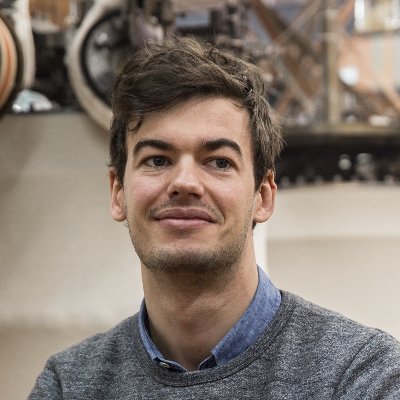A family story
It all began when Guillaume, passionate since childhood about aviation in the Roaring Twenties and the first crossings of the Channel (the first was that of Louis Blériot on July 25, 1909), came across this photo, an old family memory. This is his great-grandfather Léon Flam and his shop which was frequented by the heroes of the early days of aviation: Antoine de Saint-Exupéry, Henri Guillaume and even Jean Mermoz.
The workshop opened in Paris in 1924 manufactured canvas and leather bags, which were numbered, a guarantee of artisanal manufacturing according to the rules of the art.
You should know that aviation at that time was not an easy task.
Every kilogram loaded into the cabin had its importance,
and even the shortest flights were carried out at the risk of the lives of the pilots.
The Latécoère “Croix du Sud” seaplane by Jean Mermoz.
On May 20, 1927, Charles Lindbergh was the first pilot to
cross the Atlantic non-stop (New York - Paris),
aboard the “Spirit of Saint Louis” plane.
High quality bags made in Portugal
Erratum 01/29/2015: the bags are now made in Portugal .
But back to Guillaume : he then decided to launch his own range of luggage while respecting the artisanal standards of the time. And this is not easy because manufacturing sophisticated products is a real challenge!
Hunt for the small workshop that still knows how to tan and work leather the old-fashioned way... or the 3/4 disused factory that manages (hopefully, for a while longer) to make ends meet by offering gabardines of cottons thick enough to withstand years of wear in contact with the ground.
One of the last French silks (Challenge photo credit for Cinabre).
In short, I was really very pleasantly surprised because the quality standards are equivalent to those of Filson bags (see the article on men's bags ): we find all the details of robust men's leather goods.
View from the outside: everything is clean, no wires protruding. The zippers are massive. In short, the entire bag exudes quality.
The straps are made of very thick leather: the pores of the leather are homogeneous, fine, no cracks. The seams are regular and tight.
As for the canvas, it is very thick and it is also very regular:
it is a material which will develop a patina over time, like a beautiful denim fabric,
and not wear out stupidly.
We open the bag: the same care is given to the interior finishes as to the exterior finishes. There are practical pockets for traveling (passport, change, sunglasses), and details cut from beautiful red leathers (the brand's characteristic color).
Note: There has been a whole line of accessories for several months. I really liked the Kraft paper travel notebook, the gloves and the small leather goods. The canvas ties, for their part, convinced me less (not on the basis of the execution but on the idea).
And in terms of design: is it beautiful?
Well it's up to you to form your opinion, but I find them very successful (especially the blue bags). It wasn't planned but Guillaume and I improvised a shoot rather than reusing studio photos. FYI all bags exist in blue, black, but also in green (not shown in the photos).
The first bag is a briefcase . Admit that it’s a change from computer consultant briefcases or your CE1 teacher’s bag!

The second is the 21H “Comte de la Vaulx” format bag (21H instead of 24H, a nod to the time -21H24min- it took Mermoz to cross the Atlantic aboard his plane the "Count of Vaulx"). It's a format that will suit more urban uses: walking around with a book or lessons and a bottle of water.
And we finish with the 48H “Croix du Sud” bag (which was the last Seaplane on which Jean Mermoz flew in 1936). There, we have the usual format of bags to go on the weekend: a few clothes, a deodorant, your computer (oopah, otherwise the girlfriend/friends will complain): and presto!
In terms of design , what is particularly appreciable is the "hold" of the bags: even without being filled, the bag is sufficiently structured not to sag and retain its polished design. Another nod to the origins of the product: the bags are delivered with a copy of Vent de Sable by Joseph Kessel , another legendary pilot.
Finally, the (often painful) question of price . Leon Flam bags cost between €200 and €300, which is very competitive for this standard of quality and for a bag that will last you for years. Of course, this represents an investment: some will prefer to buy a video game console or not encroach on their monthly restaurant/evening budget. But if it's a quality bag with a strong design that you're looking for, Leon Flam is a serious lead, to say the least.















